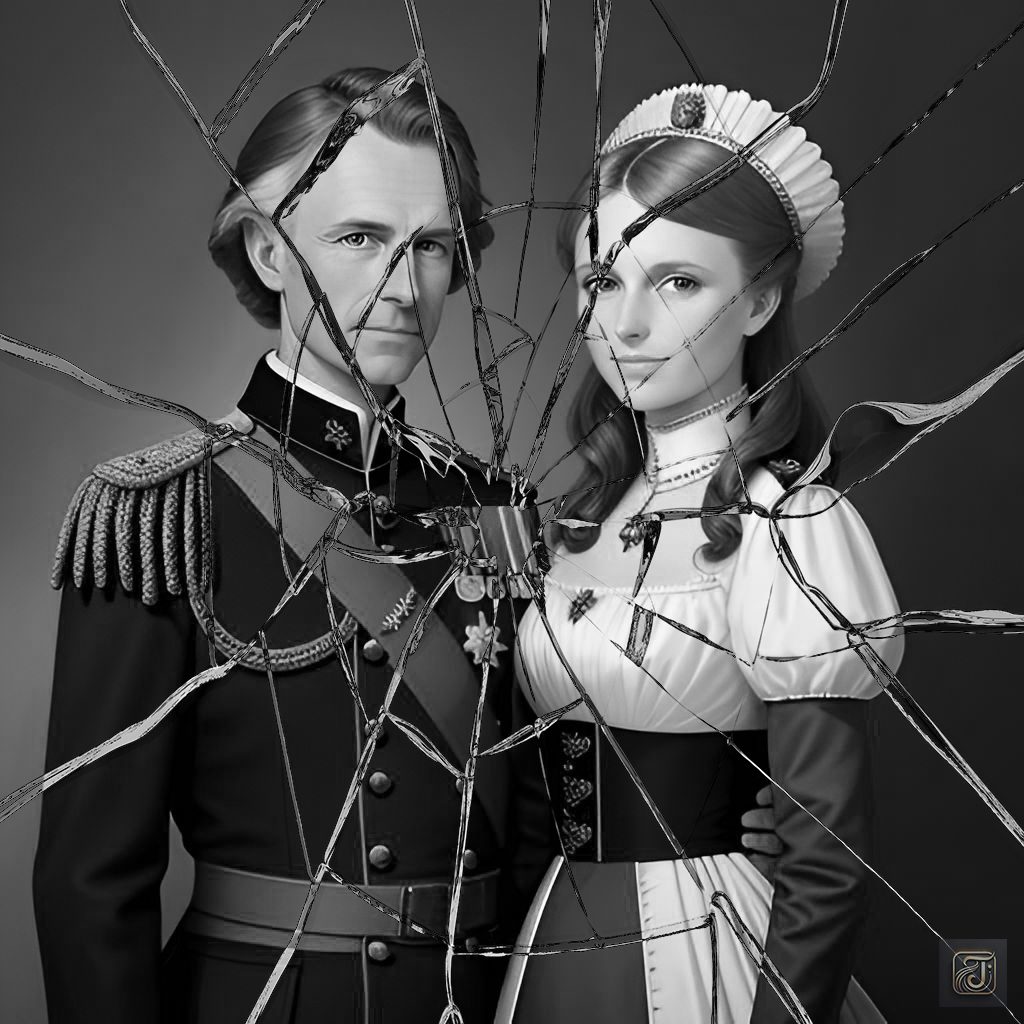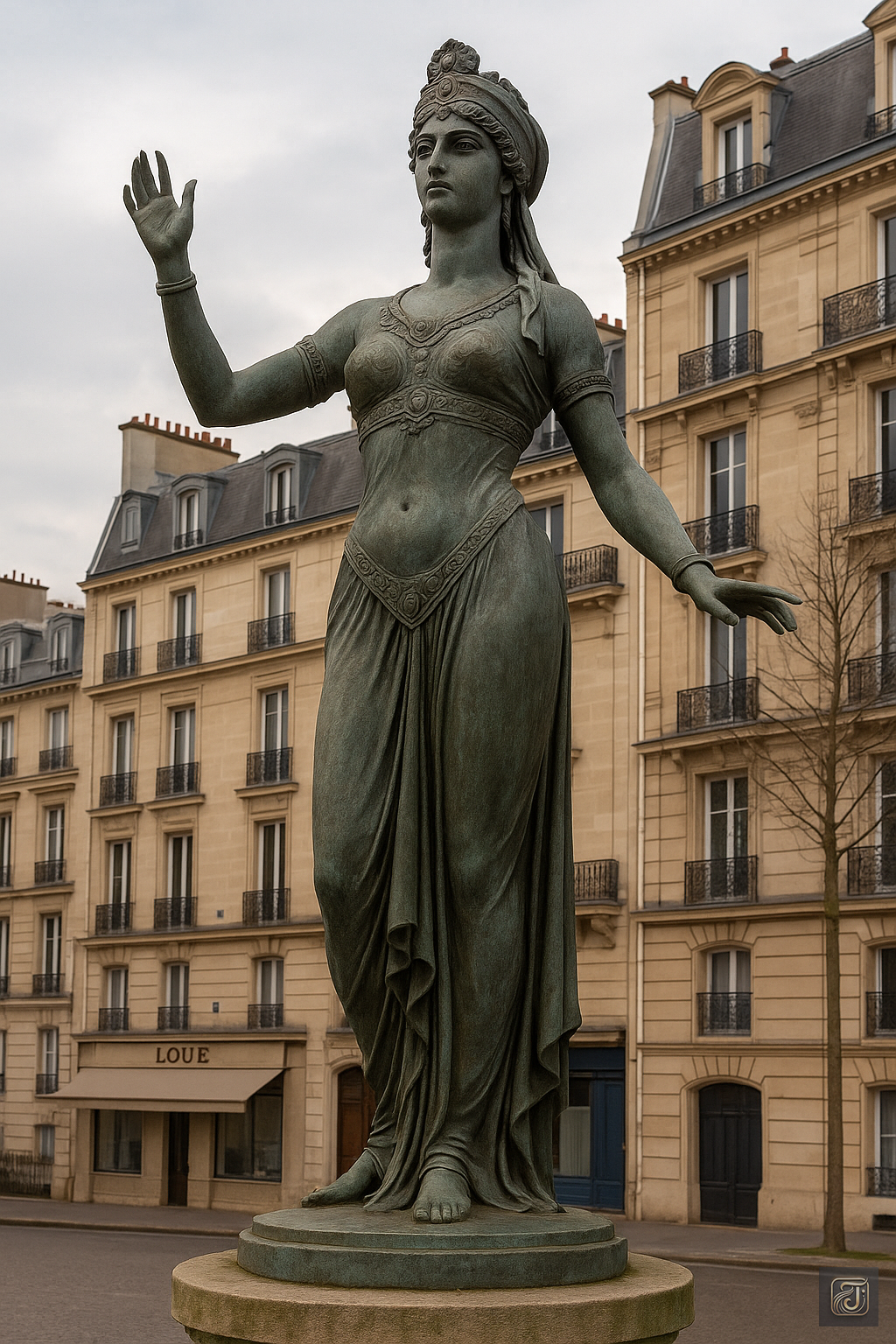
Mata Hari was a Dutch woman who was active in the early 20th century.
Her real name was Margaretha Geertruida Zelle.
She became famous as a dancer and socialite across Europe, but during World War I,
she was arrested by French authorities on suspicion of acting as a double agent and was executed in 1917.

However, behind her execution lay a conspiracy by the state.
Mata Hari’s real name was Margaretha Geertruida Zelle.
She was born on August 7, 1876, in the town of Leeuwarden, Netherlands.
Her father was wealthy enough to provide a luxurious lifestyle for the family due to his successful investments in the oil industry and ownership of a popular hat shop.
However, when she was 13 years old, her father went bankrupt due to a business failure, which led to her parents’ divorce.
After that, she began living with her mother, but two years later, her mother passed away from illness.
At that time, her father had already remarried, so she was forced to grow up in the home of relatives.
Later, she attended a teacher training school in Leiden, Netherlands, dreaming of becoming a kindergarten teacher, but she was expelled.
The reason was that she was rumored to have an inappropriate relationship with the school principal.
As a result, the principal expelled her to protect himself.
Thus, she lost her dream of becoming a kindergarten teacher, but she had another dream that she desperately wanted to realize.
That was to rise back into the wealthy class once again.
She could not forget the lavish life she had enjoyed in her childhood, free from any hardships.
However, she had neither the skills nor the connections to achieve that.
So what could she do…
Mata Hari:
“I should just marry a rich man!!”
That’s right; she had no skills or connections, but at the time, she was 19, possessing youth and beauty.
She then applied to a marriage advertisement published in the newspaper.
She married Captain Rudolph John MacLeod (1856–1928), a Dutch army officer who was 21 years her senior.
And then they moved to Indonesia.
From the time they met to their marriage, it was only 100 days.
This allowed her to return to the wealthy class and once again attain the luxurious life she had dreamed of.
They were also blessed with two children.
However, it was a marriage decided after only 100 days since they met.
Do you think a marriage decided without really knowing each other well can work out?
No!!
Her husband’s violence and infidelity continued, and their marriage quickly deteriorated.
On top of that, her beloved son was poisoned by her husband’s vengeful mistress.
This incident led to the couple’s divorce.
She tried to take custody of her daughter, but she had no income.
Her request wasn’t to be granted.
So, she returned to the Netherlands to become independent.
However, it was extremely difficult for her to find a job with no work history.
So, aiming for a big break, she moved to Paris.
She was strongly influenced by the traditional dances and costumes of Indonesia during her time there.
At that time, Paris was the center of art and culture, and exotic and sensual performances were in vogue.
Therefore, she decided to leverage the environment where the exotic dances she knew from the East would attract attention, aiming to establish her career as a dancer.
And her plan was a great success!!
Her performances, featuring the dances she learned in Indonesia and her exotic costumes, evoked a sense of the foreign in her audience.
At that time, Eastern culture was embraced by Western society as something mysterious and enchanting, and her dances quickly gained popularity.
She became a sensation, known as the “Princess from Java, Indonesia” or the “Dancing Priestess of the Indian Temples.”
The name she used as a dancer at that time was
“Mata Hari”
It means “sun” in Indonesian.
In 1905, Mata Hari, who debuted in Paris, captivated many audiences with her exotic dances and daring performances.
She danced almost naked on stage, combining eroticism and mystique in her performances, which quickly made her famous.
In particular, she claimed that her dances were based on religious rituals and traditions, emphasizing the mystical image of the East.
This “exotic and mystical dance” was very well received by the upper class and artists in Europe at the time.
After that, Mata Hari performed in various parts of Europe, primarily centered in Paris, and her fame spread internationally.
In addition to her success as a dancer, she became involved with many wealthy men, quickly expanding her network.
She became known as a free-spirited and captivating figure, and her lifestyle further enhanced her mysterious image.
However, her success did not last long.
The reason is simple.
First, people simply get bored over time.
And another reason was that imitators started to emerge, copying her performances.
Her popularity rises, so it’s only natural for imitators to appear in this world.
That hasn’t changed from the past to the present.
Moreover, she became famous only after entering her thirties.
In terms of beauty and physical allure, she inevitably fell short compared to younger women.
If those who copied her were younger, more beautiful, or better dancers, she had no chance of competing with them.
The loss of freshness, increased competition, limitations in dance techniques, and aging gradually led to a decline in her popularity.
When popularity declines, there is something else that tends to decline simultaneously.
Yes, exactly! As popularity wanes, income typically decreases as well.
Absolutely.
Once someone has experienced a luxurious lifestyle, adjusting to a lower standard of living can be quite challenging.
It’s difficult to decrease that comfort level.
So, how did she maintain her comfort level even though her popularity had already decreased?
However, there was one more thing she had left.
That was her network of connections.
The network of wealthy men she built during her dancing days.
She became dependent on her relationships with wealthy men.
Finally, she became a high-class courtesan, catering to upper-class men and military officers, relying on their support for her livelihood.
However, it was only a temporary solution.
“This too would soon be forgotten or taken by other younger women…”
Then, the path she chose next was…
A spy!!
At that time, Europe was engulfed in World War I.
Amidst this, she was recruited by the German intelligence agency to work as a spy.
During World War I, the Netherlands maintained a neutral stance, not engaging in conflict with any European country.
Therefore, as a Dutch citizen, she was able to travel freely between European countries.
Due to her upbringing and her travels as a dancer, she was fluent in Dutch, French, English, German, and Malay.
Such a woman was currently working as a high-class courtesan, serving the upper classes and military officers of various countries.
– She could travel freely between various countries.
– She could speak five languages.
– She had connections with powerful individuals from various countries.
Yes, she possessed the perfect qualities to be a spy.
And she was struggling with declining income as a dancer.
That’s why for her, there was no reason to decline such an offer.
Thus, she became a spy for the German military.
The code name given to her by the German military at this time was…
「H-21」
However, it was not only the German military that believed she was well-suited to be a spy.
She also received a spy offer from the French military, the enemy of the German military.
And surprisingly, she accepted this offer as well.
So what becomes intriguing here is, why did she feel the need to take on the dangerous risk of accepting offers from two opposing countries, right?
Actually, at this time, she had a lover.
Her lover was a young Russian officer named Vadim Maslov(Vadim Maslov).
He was a Russian military pilot and more than 20 years younger than her.
The two were in a passionate romantic relationship, but during World War I, Maslov was wounded and captured by the German forces as a prisoner of war.
That’s right, Mata Hari, even aware of the danger, offered her cooperation as a spy to France in exchange for the release of her beloved.
Thus, she became a double agent to save her lover.
However, as I mentioned at the beginning, she was ultimately executed.
What happened to her…?
One day, the German army used unencrypted radio communications, which were intercepted by the French intelligence agency.
This wireless communication contained information regarding a certain spy.
The code name of that spy was…
“H-21!!”
Naturally, the French military began to identify the spy with the code name H-21.
French military:
“H-21, who the hell is this!?”
French military:
“Isn’t it Mata Hari!?”
Why was she suspected…
This was due to her past actions, where she had relationships with many powerful figures and military personnel from various countries.
And amidst the wartime struggles that forced many into hardship, her glamorous lifestyle and freedom of movement.
Moreover, the information she provided to the French military about the German army was vague and unreliable.
French military:
“Her lifestyle exceeded the standard of living that the French military was paying her for.”
“Isn’t she receiving compensation from the German army as well?”
“And the information she provides from her espionage activities regarding the German army is all vague and lacks any real usefulness, right?”
“Isn’t it possible that she’s actually working as a spy for the Germans?”
As a result, it was speculated that the spy was Mata Hari.
On October 15, 1917, Mata Hari was executed by firing squad for espionage.
But why!?
The claim that she was the German spy “H-21” was merely speculation.
There was no solid evidence at all.
So why did she have to be executed as a double agent, even without solid evidence?
The reasons are:
Scapegoating!!
However, the French government didn’t care whether she was actually a spy or not.
– Living a lavish lifestyle while people suffer from the war.
– A courtesan with relationships with many powerful figures and the wealthy.
Her image was perfect for the government to portray her as the villain.
At that time, France had been in a prolonged war but had not achieved significant military victories in response.
As the war dragged on, only the casualties continued to rise.
Amidst this turmoil, public dissatisfaction grew increasingly intense.
Citizens:
“What’s the French army even doing!!”
To win a war, it is essential for the nation and its people to unite as one.
However, instead of uniting, the government continued to lose support from the people.
The French military was cornered.
French military:
“What should we do!?”
“At this rate, the country could collapse from within due to riots and rebellions!!”
Then, what the government utilized was…
Mata Hari!!
The French government announced.
The French government:
“We have captured a spy!!”
“It’s Mata Hari!!”
“She is the spy who, while working for the French army, leaked our country’s information to Germany!!”
“Because of her, France’s information has leaked to Germany, resulting in numerous casualties!!”
Citizens:
“Well done catching her!!”
“Execute her!!”
In this way, the French government placed the blame for their lack of success in the war solely on her, redirecting the public’s dissatisfaction and anger towards her.
At the same time, the French government restored its credibility with the public by claiming the achievement of uncovering a spy.
Exactly.
The French government shifted all the blame onto her alone.
In this way, in 1917, Mata Hari was arrested by the French authorities and put on trial for espionage.
Naturally, she claimed her innocence during the trial, but her assertions were not accepted, and France deemed her a double agent, deciding on a death sentence by firing squad.
BOOOOOOOOOOOOOOM!!!!!!!!!!!!!

And on October 15, 1917, she was executed by firing squad at the age of 41.
Indeed, she was a double agent.
However, her accomplishments as a spy were nonexistent.
Actually, she was a double agent.
But it had nothing to do with France’s inability to achieve results in the war.
However, for the French government, it didn’t matter whether she was actually a spy or not.
The purpose of the French government was just to pass all of the responsibility to the French government.
She was killed by the conspiracy of the French government.
She might be the greatest victim of this war.
There is still a statue of her in the Netherlands today.
If you found this article helpful or enjoyable, please consider supporting me with a cup of coffee! 👈Click☕🙏
I’m a passionate blogger who loves diving deep into human history and sharing captivating stories about remarkable figures and events from the past. My blog combines engaging storytelling with beautiful illustrations, making history accessible and enjoyable for everyone.
Currently, I write my blog while managing a full-time job. Balancing both limits the time I can dedicate to research, writing, and illustrations.
With your support on Ko-fi, I can reduce the time spent on my main job and focus more on blogging, allowing me to increase the frequency of updates and bring you even more captivating stories.
Whether it’s a one-time coffee or a regular contribution, every bit goes directly into making history engaging and fun for my readers.
Thank you for joining me on this journey through time. Let’s uncover the past together!
If you found this article insightful, please consider supporting me with a cup of coffee! 👈Click☕🙏
Author: Fuji
Human history is truly complex, isn’t it?
There are countless websites introducing historical figures and events, but many of them are just plain explanations—not exactly exciting to read.
On the other hand, reading books takes a lot of time and effort.
That’s where I come in.
Through “stories that are more engaging than explanations and shorter than books,” I aim to bring the world’s history and humanity’s records to you in a more accessible and interesting way.
If my stories inspire you to love history a little more, I’d be absolutely thrilled!












































Comment